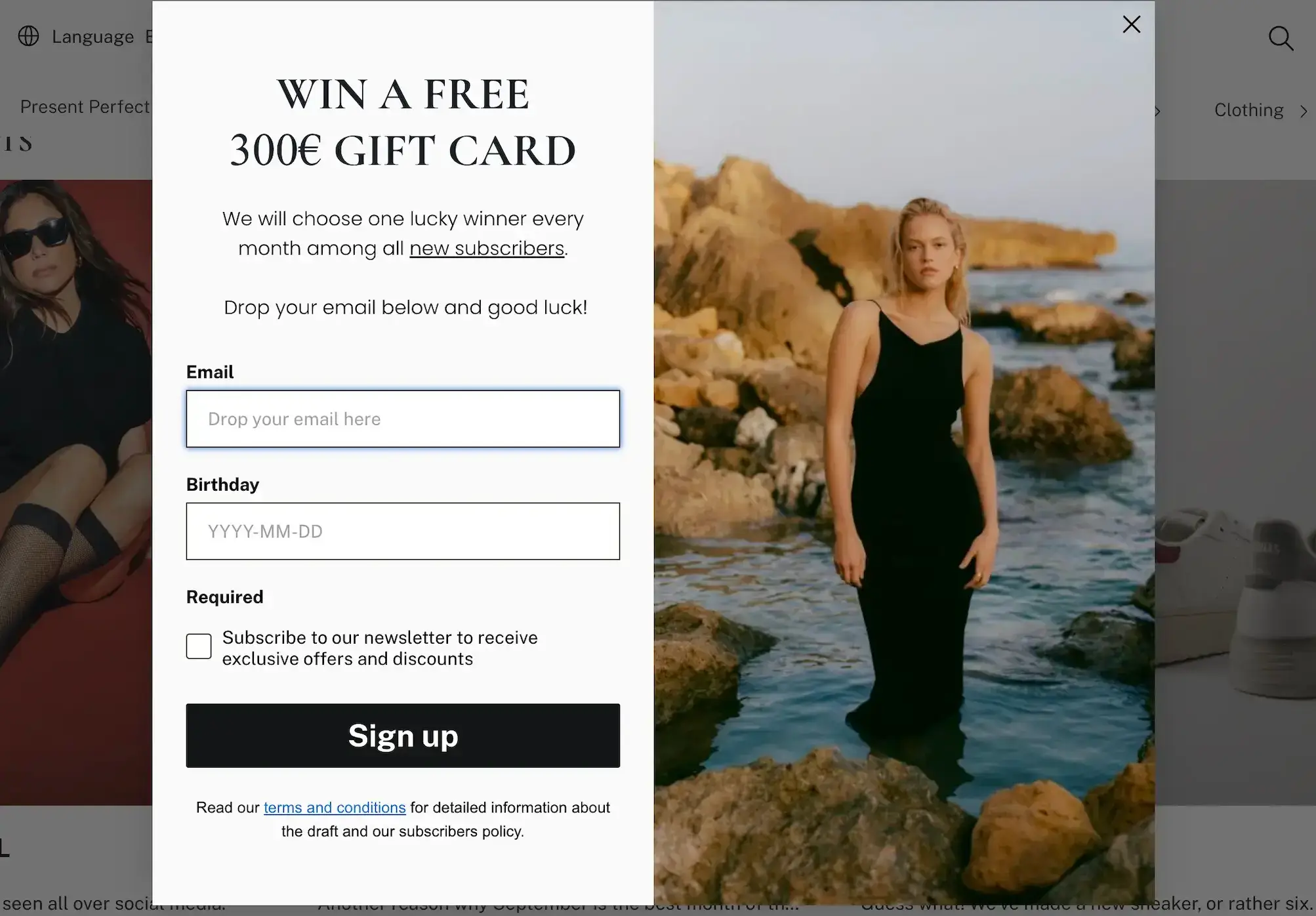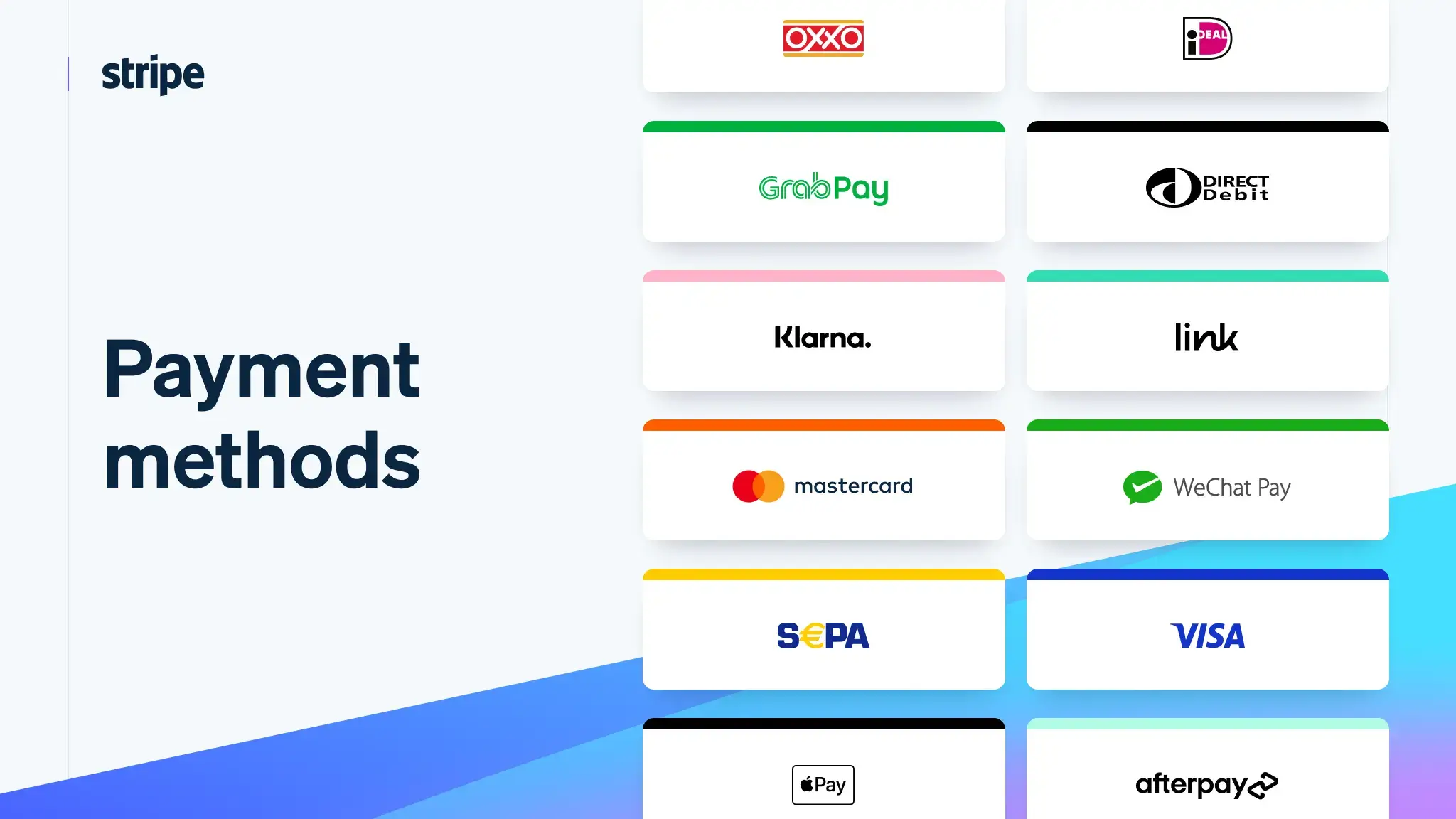Rarely do potential buyers land on your website, view a product page, add to their cart, and check out in one go. The chance of that happening is less than 2%.
The way people make purchase decisions is quite “messy,” as Google’s consumer insights reveal.
The buyer’s journey involves a complicated web of touchpoints, and online shoppers are notorious for abandoning their carts.
As an eCommerce business looking to improve your conversion rates, it’s essential to understand what exactly happens in the eCommerce conversion funnel and how to use it to guide shoppers to checkout faster.
In this article:
- What is the eCommerce Conversion Funnel?
- Key Events in the eCommerce Conversion Funnel
- 6 Effective Tactics to Improve eCommerce Conversion Rate
- Essential eCommerce Conversion Metrics to Analyze

Custom image from Canva
What is the eCommerce Conversion Funnel?
The eCommerce conversion funnel is the process shoppers go through, from taking an interest in your brand to completing a purchase on your online store.
Unlike the marketing funnel, where you’re reaching a very distracted audience, the conversion funnel starts when a potential buyer takes an active interest in your business—activates your offer, visits your website, views a product page, etc.
It’s called a conversion funnel because it tracks a shopper’s interaction with your site and helps you identify the key actions shoppers take as they move along the path to purchase.
These actions are in four stages:
- Interest: When a potential buyer develops an interest in your product and engages with an offer.
- Consideration: When the shopper is actively browsing your website or making comparisons.
- Conversion: Also known as the decision or purchase stage, this is when the shopper completes a purchase. It is the ultimate goal of most eCommerce businesses: to convert website visitors to paying customers.
- Loyalty: Also known as the retention or post-purchase stage, this is when buyers become repeat customers. You have given them reasons to trust your brand and commit to buying from you multiple times.
Key Events in the eCommerce Conversion Funnel
-
Activate an offer
- They click an offer and follow the outlined steps. A recommendation might be a percentage off their first order, a chance to win a prize, or early access to an upcoming sale.
-
View a product
- They visit a specific product page to learn more about the product. They are still exploring and evaluating and have yet to add anything to their cart.
-
Add to cart
- They are ready to commit but might not proceed to checkout. Dropoff at this point can occur for multiple reasons. Offer them a smooth checkout experience.
-
Complete checkout
- They select a shipping method, enter shipping information, verify the payment method, and get their order confirmation.
-
Experience the product
- Completing checkout is not the end of the buyer’s journey. Product experience is a crucial aspect of the funnel that falls under post-purchase and retention.
It will inform their future interactions, such as making a repeat purchase, advocating for, and recommending your product.

The buyer’s path through the funnel isn’t linear. They enter and exit at different points and encounter friction, which you must resolve to ensure they get to checkout faster.
Key events help you identify pre-purchase exit points and opportunities to drive micro-conversions using targeted campaigns.
6 Effective Tactics to Improve eCommerce Conversion Rate
- Identify the actions shoppers take when browsing your store
- Uncover drop-off points and fix funnel leaks
- Outline campaigns that drive micro-conversions
- Use landing pages to create more effective campaigns
- Explore alternatives for incentivizing and converting shoppers
- Add multiple ecommerce payment options
1. Identify the actions shoppers take when browsing your store
Objective: To track shoppers’ behavior and identify patterns or trends.
Why this is important: If you have a limited understanding of how shoppers interact with your website, you're less likely to be able to create a shopping experience that converts visitors into customers.
When shoppers arrive at your online store, they follow a path you’d typically call the buyer’s journey. It represents how they move through your site, including their entry and exit points.
Being able to map out this virtual path enables you to identify what you need to do to guide them to checkout.

You can accomplish this using event-based analytics, heatmaps, session recordings, or user testing.
With these methods, you’ll be able to track:
- Shopper’s search keywords
- Pages they visit
- Products they view
- How they engage with your popups (sign up for your email list or complete a recommendation quiz)
- Products they add to their cart
- Point of cart abandonment
- How long it takes them to complete a purchase
- Most used features ( filtered search, product videos, or chat support)
Another option for identifying common paths your website visitors take is funnel visualization and goal flow reports in Google Analytics.
For example, the Reverse Goal Path report helps you retrace a visitor's steps from beginning their journey to arriving at a conversion.
Knowing their patterns, what they’re looking for, and what motivates them, will equip you with insights into what offers and promotions will most likely convert.
Tools to use:
Google Analytics, HotJar, and Amplitude
2. Uncover drop-off points and fix leaks in your funnel
Objective: To identify what hinders conversion and reduces churn rate.
Why this is important: If potential buyers abandon your conversion funnel before they complete a purchase, it indicates that they need more convincing of the product’s value, can’t afford it, experience friction while browsing, or are dissatisfied with the options presented.
Knowing drop-off points ensures you can find and fix common issues.
To uncover the stages in your eCommerce conversion funnel where many shoppers drop off, analyze the data you gathered earlier when you tracked how visitors browse your site.
In addition to using Google Analytics and heat-mapping tools, you can also:
- Conduct exit-intent surveys that present the shopper with common objections that might prevent them from taking the next step in their journey.
- Run a cart and checkout abandonment analysis to see where purchase-intent shoppers drop off.
Common issues that cause drop-off and how to fix them:
- No sense of urgency. Use exit-intent popups to offer limited-time sales or discounts and make sure it’s more tempting for them to check out than to leave.
- Vague product descriptions. Update your product descriptions to explain product benefits and unique features clearly. Also include detailed specifications that help the shopper make an informed decision.
- High prices. Offer money-back guarantees and show social proof with positive reviews.
- Complicated checkout process. Minimize the number of steps to checkout, offer standard payment methods, provide live chat support, and offer a guest checkout option.
- Expensive shipping. Offer free/low-cost shipping, free returns, or a gift when the customer spends over a certain amount, and be transparent about any added costs.
Tools to use:
POWR Poll, CrazyEgg, and Amplitude
3. Outline essential campaigns that drive micro-conversions
Objective: To keep shoppers active until completing the checkout process.
What are micro-conversions?
Micro-conversions are small milestones leading up to getting browsers to buy. You need to drive consistent engagement with targeted pop-ups and campaigns to keep shoppers on your website and get them to checkout faster.
From the point of interest and engagement with an offer, you need the plan to move shoppers along their path to purchase in tiny steps.
Micro-conversion campaign types:
-
Promotional campaigns
-
- Holiday offers: You already know that Black Friday, Cyber Monday, New Year’s Eve, and other similar holidays tend to be a big hit with shoppers. Optimize your email copy to drive up open rates and CTR.
- Product-bundle email campaign: Offer 3-5 products in a set or two complementary products. Make your incentive clear—shoppers get to spend less when buying in bundles.
- Influencer-curated products: Consider Amazon’s “The Drop” and adopt the strategy for your business and target customers.

-
Welcome and browse-abandonment campaigns
-
- First-time shopper offers: This welcome offer encourages new visitors to sign up for your email or SMS list. Prioritize offers that are hard to resist.
- Limited-time offers: Use special promotions that expire after a certain period to create a sense of urgency and encourage shoppers to explore a category of products or add to a cart.
- Product and behavior-based popups: Target shoppers based on products they have viewed or the category pages where they have spent the most time. You can use a pop-up to show similar products or offer a discount for the specific category the shopper is browsing.
- Recommendation quiz: Personalize the shopping experience by asking simple questions and generating a list of recommended products tailored to the shopper’s needs and interests. It can help them quickly and easily find the products they are looking for quickly and easily.
- Browse-abandonment offers and campaigns: Use exit-intent popups and re-engagement campaigns to offer incentives that encourage shoppers to stay on your website longer and purchase.
-
Purchase-intent campaigns
-
- Abandoned cart campaigns: Most eCommerce businesses use email and SMS messages for this type of campaign, such as Sendinblue (Brevo) and other alternatives. However, having on-site popups or in-app push notifications to remind shoppers of the items left behind in their cart can be more effective in getting them to complete the checkout before exiting your site.
- Upsell and cross-sell campaigns: Use targeted recommendations to show customers a premium version of the product in their cart or offer additional related products for a small extra cost.
- Retargeting campaigns: Show ads to people who have visited your website, remind them about the products they viewed, and offer incentives to lead them back to the specific products they viewed.
Tools to use:
POWR Popup, Mailchimp, and Facebook Ads
4. Use landing pages to deliver more impactful campaigns
Objective: To help shoppers activate specific offers easier and faster.
Why this is important: If you’re driving traffic from paid ads or inbound and organic channels, sending them to your home page won’t be very effective because homepages are full of distractions.
Landing pages have a single focus that provides shoppers with a clear and concise call to action.
Traffic is hard to earn, so if potential buyers have clicked through to your site, you must deliver personalized content and a well-designed guided shopping experience.
Landing pages help you:
- Promote specific products. Use this to provide more detailed information highlighting the product's features, benefits, and customer reviews.
- Target specific audiences. Create messaging for particular segments like customers who have bought from you before or shoppers who abandoned their carts. These customer segments have a higher chance of converting to a sale.
- Create a seamless shopping experience. Design a landing page that is visually appealing and easy to navigate. Use engaging videos or images, clear copy, and strong CTAs.
To further improve effectiveness, use A/B testing to analyze different landing page elements and identify which version performs better in conversions.
Tools to use:
Google Optimize and Woorise
5. Explore alternatives for incentivizing and converting shoppers
Objective: To communicate the unique advantages of buying from your store.
Why this is important: You can’t perpetually use pricing or discounts as your leverage. Exploring alternative strategies ensures you can continue to thrive in the competitive eCommerce environment.
New research by Google, based on a simulation of 120,000 shopping scenarios with 1,000 people, shows that people with high-purchase intent for a particular product tend to swap between retailers for their final purchase.
With that in mind, it’s necessary to identify strategies that capture shoppers' attention and motivate them to choose you.
Pablo Pérez, a leading researcher covering the retail industry, recommends that businesses should do so much more than offer discounts because pricing is just one element of the marketing mix.
As you plan your campaigns and design landing pages, add context and relevant information emphasizing the benefits of buying from you over your competitor.
How is this accomplished?
- Social proof. Include great customer reviews and stories to build trust.
- Fast delivery. Offering next-day shipping and free returns can boost shoppers’ confidence.
- Free gifts and samples. It will always get shoppers excited.
- Showcase authority. Highlight influential customers, mention industry awards and press mentions.
- Highlight key features of products. It demonstrates product value and simplifies the purchase decision.
Tools to use:
TrustPulse or Yotpo
6. Add multiple ecommerce payment options
Objective: Reduce friction at checkout by offering multiple payment methods
Why this is important: Offering multiple ways to pay for your goods and services will ensure a smooth checkout process.

Wondering which payment options you should have? Consider first your geographical target market.
For example, if you are targeting the US for new business, you must, at the very least, offer PayPal and Google Pay. Aiming to find new customers in China? You must offer AliPay and


